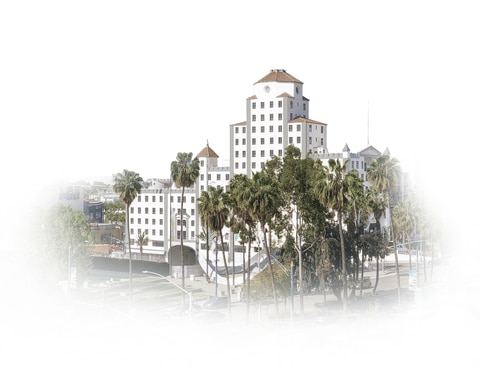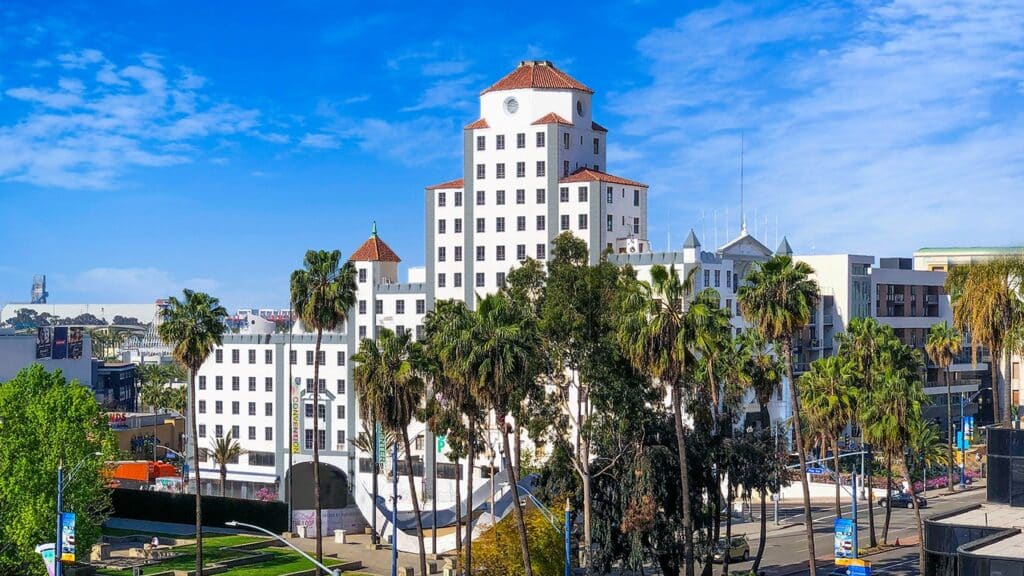Refining the Capital Stack for Multifamily

By Mark Fogarty
6 min read
Historic Tax Credits can significantly help multifamily financing, particularly for projects involving rehabilitating and preserving historic buildings. The Ocean Center Apartments in Long Beach, CA, is an example.

Ocean Center, a big redevelopment of an old office complex into 80 energy-efficient apartments, has three financing sources—a construction bridge loan, Historic Tax Credit (HTC) equity and money through the Commercial Property Assessed Clean Energy (C-PACE) program.
According to national lender X-Caliber Funding, the company provided $34.4 million in short-term financing and CastleGreen Finance provided $20.6 million in C-PACE financing through the California Statewide Communities Development Authority’s (CSCDA) Open PACE program. X-Caliber and CastleGreen are affiliated companies.
The property was granted $12.4 million of Historic Tax Credits. The HTC funds can be used for approved hard costs, financing and other soft costs related to the renovation.
Commercial Property Assessed Clean Energy (C-PACE) is a public-private partnership designed to promote energy efficiency and sustainability in buildings. According to CastleGreen Finance Managing Partner Sal Tarsia, “The program doesn’t use any taxpayer money. We don’t receive any guarantees from the government, and it is a state-by-state program.” He continues, “With respect to Ocean Center, we have financed improvements that are energy efficiency-related, and for this property, we financed various water conservation-related improvements as well. Very unique to California, we are able to include seismic shoring retrofits on the property.”
Tarsia says about 30 states use C-PACE with eight others that have the legislation in place without having used it yet.
“The C-PACE assessment is structured as a fixed-rate, self-amortizing financing with a 30-year term,” says Tarsia. “It fits in nicely with historic rehabs because old buildings generally need efficiency updates. We are layered into an advantageous part of the capital stack, and it works well with historic properties because while the HTCs are promoting renewal for both aesthetic and structural changes to older buildings, we’re focused on the energy aspects and in this case, some structural aspects as well.”
X-Caliber is the first mortgage provider, while CastleGreen handled the C-PACE end. Pacific6 Enterprises, Long Beach, is the owner and developer of the building.
Sherwin Williams Tax Credits Investor
The HTC part was largely handled by the developer, Tarsia says, working with Novogradac and Historic Consultants. Sherwin Williams was the tax credit investor. Octagon was involved with the bridge loan for the HTCs.
“The renovation is done,” Tarsia says. “The property had its opening earlier this year. They are partially leased and still in their lease-up period.”
Ocean Center Apartments is a market-rate development, meaning no Low Income Housing Tax Credits were involved.
Tarsia notes that the financing was done relatively quickly. “We came inside 100 days from initial application to closing. We left a placeholder for HTC bridge knowing it would come in later.”
The financing allows the lender to use two parts of its company in one deal. Besides the C-PACE portion, X-Caliber Funding provided a bridge loan to fill in the middle ground. Tarsia adds, “A lot of times these historic renovations can be quite expensive because you have to leave certain components of the exterior of the building in place while you’re trying to modernize the rest of the building. So, the C-PACE works well with the HTC bridge, which is somewhat limited in size.”
Tarsia continues, “By implementing the C-PACE with the rest of the bridge, which is often the construction portion and often very expensive, the PACE acts to average down the pricing to ease the burden on the borrower as they are going through the renovation.”
This is the third deal the company has done with C-PACE and HTCs with various partners, and one deal on its own.
Tarsia says that C-PACE can include renewables, like solar or wind capture, as well as geothermal. He says it can include more rudimentary parts of a project, like HVAC replacements, electrical upgrades, switching older properties to LED lighting, and can include water conservation measures, like low flow fixtures. He adds that in certain parts of the country, it can include sustainability measures, like seismic and fire resistance in California, and wind mitigation in more hurricane-prone areas.

“At Ocean Center, there are no renewables because you can’t alter the exterior,” Tarsia says, “but otherwise we had some seismic upgrades. It was largely a gut renovation, so there were electrical upgrades, LED lighting, HVAC, low-flow fixtures and new water heaters.”
Believed to Be a First
The company completed another financing for the historic Breakers Hotel, rebranded as Fairmont Breakers Long Beach, with the same developer about a block and a half from the Ocean Center site.
According to Tarsia, “We fell in love with the combination of financings, so we did all three pieces—the C-PACE, the first mortgage construction loan and the HTC bridge under one roof, which we believe is a first in the industry.”
“The financing structure worked very well,” says Tarsia. “Being able to control all three pieces and being able to structure it so the relative pieces get the optimal benefit, as opposed to having different parties that may be more focused on their individual economics, we were able to focus on the overall capital structure that served the project the best and were able to structure it accordingly.”
John Molina, founding partner of Pacific6, says his firm became involved after it bought the Breakers. The city approached the firm about rehabbing a second property, the Ocean Center.
Since it was already rehabbing a hotel, it decided to turn the Ocean Center into apartments. Pacific6 has completed four historic properties, but this was the first time it was involved with multifamily, Molina says.
Pacific6 says it “attempts to do well by doing good” and does projects with community good in mind.
Tarsia and CastleGreen estimate the design for Ocean Center will result in 4.9 million gallons in yearly water savings and 466 kWh in total annual energy savings. The project is designed to reduce CO2 emissions by 189.1 metric tons per year.
The century-old national historic landmark formerly housed 200 office suites – it was part of the Pike Amusement Zone and the very well-known “Walk of a Thousand Lights.”
During renovations, much of the interior was preserved and the 1929 terrazzo floors continue to run along hallways. The property features 80 luxury apartments, with 40 unique floor plans and four retail spaces containing 11,864 square feet. Of the 80 apartments, 56 are one-bedroom or studios, 22 are two-bedroom units and two are penthouse apartments. Ocean Center features a centralized location just off the Pacific Ocean.
Resident amenities include a large terrace and clubhouse, fitness center and bicycle storage. The Los Angeles region has one of the highest renter-to-owner ratios in the country. Demand for housing in the Los Angeles region consistently outpaces supply, resulting in strong rent growth and preventing most sub-markets from becoming overbuilt.
The construction added 150 jobs to the local economy, as well as five full-time employees at the facility.